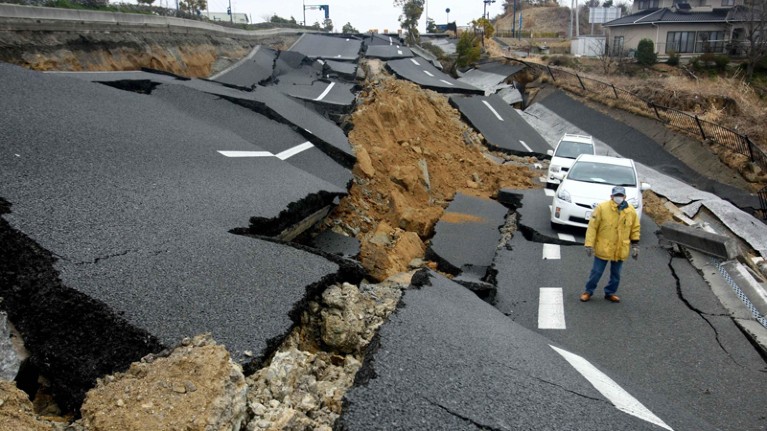This is where two plates meet.
Boundary

Name the boundary believed to be responsible for this geological landform or event. (Be specific!)
Convergent Plate Boundary (Continental-Continental)
This plate boundary occurs when two plates move away from each other.
Divergent Plate Boundary
The San Andreas Fault is a result/caused by this plate boundary.
Transform Plate Boundary
Convection Currents occur in this layer of the earth.
Mantle
This is the movement of fluid caused by the rising of heated particles and the sinking of cooled particles.

Name the boundary believed to be responsible for this geological landform or event. (Be specific!)
Divergent Plate Boundary (Oceanic-Oceanic)
This type of plate boundary occurs when two plates slide past each other horizontally.
Transform Plate Boundary
The Himalaya Mountains is believed to be a result of this plate boundary.
Convergent Plate Boundary (Continental-Continental)
This is a weak spot in the crust where magma has come to the surface.
Volcano
This is a deep, steep-sided canyon in the ocean floor.
Trench

Name the boundary believed to be responsible for this geological landform or event. (Be specific!)
Covergent Plate Boundary (Oceanic-Continental)
This plate boundary occurs when two plates move towards each other.
Convergent Plate Boundary
The Mid-Atlantic Ridge is believed to be a result of this plate boundary.
Divergent Plate Boundary (Oceanic-Oceanic)
How many major lithospheric plates are there? Name them!
There are 7 Lithospheric Plates.
1) North American Plate
2) South American Plate
3) Pacific Plate
4) Eurasian Plate
5) African Plate
6) Indo-Australian Plate
7) Antarctic Plate
This is an area where magma from deep within the mantle melts through the crust above it.
Hot Spot

Name the boundary believed to be responsible for this geological landform or event. (Be specific!)
Transform Boundary (Continental-Continental)
Name the two zones that occur at a Convergent Plate Boundary. Tell what type of plates converge at these zones.
Subduction Zone (Oceanic-Continental) and Uplift Zone (Continental-Continental)
Mount Saint Helens is a volcano in the Cascade Range and is believed to be a result of this plate boundary.
Convergent Plate Boundary (Oceanic-Continental)
Lithospheric Plates are large pieces of Earth that move over this area.
Asthenosphere
Ths is the name of the chain of volcanoes that lines the Pacific Rim.

Name the boundary believed to be responsible for this geological landform or event. (Be specific!)
Convergent Plate Boundary (Oceanic-Continental)
Explain what happens at a convergent plate boundary between an oceanic plate and a continental plate. Be specific!
The oceanic plate subducts below the continental plate because it is more dense. When the oceanic plate subducts, pieces of the oceanic plate will melt back into the mantle. The continental plate rises above the oceanic plate because it is less dense. This also creates a subduction zone where you will find a trench.
The Valdivia Earthquake had a magnitude of 9.5 and claimed about 1,655 lives. Using your knowledge of earthquakes and plate boundaries, describe what happened before, during, and after this event.
This describes the large-scale processes that affect the structure of the earth's crust.
Tectonics